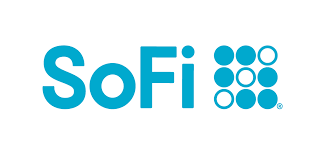3 Ways to Take Advantage of High Interest Rates in Banking
KEY POINTS
- Rates for consumer borrowing and banking are up across the board, thanks to the Federal Reserve's rate hikes.
- It's a bad time to borrow money, but you can take advantage of higher rates if you have cash you need a new home for.
- Consider opening a new high-yield savings account, money market account, or CD.
Treat yourself to a new bank account.
One tiny silver lining of the last year and change of rampant inflation has been the higher interest rates we've seen on some bank accounts. The rise in consumer interest rates both for borrowing money and for banking have been due to the Federal Reserve's rate hikes in response to inflation.
The Fed doesn't set those consumer rates; rather, the federal funds rate is what banks charge each other for borrowing. A higher federal funds rate often translates to higher rates on consumer financial products as well. This makes it a less-than-ideal time to borrow money. But if you've got some cash you want to keep accessible for the short term, or perhaps only tie up for a maximum of a few years, here are some great options for you.
1. Open a high-yield savings account
Savings accounts are kind of like personal finance 101, and it's likely to have been your first bank account ever, when you were a child. Today's savings accounts have come a long way from that, however. Many of the best savings accounts are offered by online-only banks, as opposed to more traditional brick-and-mortar banks. This means that they can pay an even higher APY (annual percentage yield) on the money you keep there, because the bank doesn't have branches to maintain. And as of this writing, you could score an APY of 4% or more on your cash.
Most savings accounts are very easy to open and don't have a minimum balance requirement, but you should know that it isn't necessarily easy to withdraw cash directly from one, as many don't come with an ATM card. In some cases, you may need to link a checking account to your savings so you can transfer cash to the checking account first, then make a withdrawal at an ATM.
2. Open a money market account
Money market accounts have features of both checking and savings accounts, and the APYs on them are up right now too. The best money market accounts are also sitting at 3%-4% APY. You might wonder why you should bother with one if you can get the same rate (or better) from a savings account. But unlike a savings account, your new money market account will come with check-writing capabilities or a debit card, without you needing to link it to another account. This is very convenient, and makes a money market account a good place to keep your emergency fund.
Note that some money market accounts have minimum balance requirements to avoid maintenance fees or earn the highest level of interest possible. And don't think that just because you have a debit card means the account can be used to pay for your everyday purchases. Many banks still enforce the Regulation D provision that limits these accounts (along with savings accounts) to just six "convenient" transactions per month.
3. Open a CD
If you've got a chunk of cash you won't need for a few years, consider opening a certificate of deposit account, or CD. In doing so, you'll be agreeing to tie up your money for a set period of time (often six months all the way up to several years), and if you withdraw the money before the CD matures, you'll lose out on some of the interest you've earned. It's worth it to leave the money alone, however, as the best CD accounts are currently paying more than 4% for a 1-year CD.
What you lose in easy access to your money, however, you gain in a path to saving money well into the future. You can take your cash and split it up into multiple CD accounts with varying term lengths, and as each matures, roll that cash (now with interest added!) into a new one. This is called CD laddering and it's a great way to ensure you get even more income from your savings.
If you've got some nice cash savings and want to take advantage of the higher interest rates we're seeing these days, any one of these accounts could be a fit for you. Consider how much access you'll need to your money (and when), and choose accordingly.
These savings accounts are FDIC insured and could earn you 11x your bank
Many people are missing out on guaranteed returns as their money languishes in a big bank savings account earning next to no interest. Our picks of the best online savings accounts could earn you 11x the national average savings account rate. Click here to uncover the best-in-class accounts that landed a spot on our short list of the best savings accounts for 2024.
Our Research Expert
We're firm believers in the Golden Rule, which is why editorial opinions are ours alone and have not been previously reviewed, approved, or endorsed by included advertisers. The Ascent does not cover all offers on the market. Editorial content from The Ascent is separate from The Motley Fool editorial content and is created by a different analyst team.
Related Articles
View All Articles
